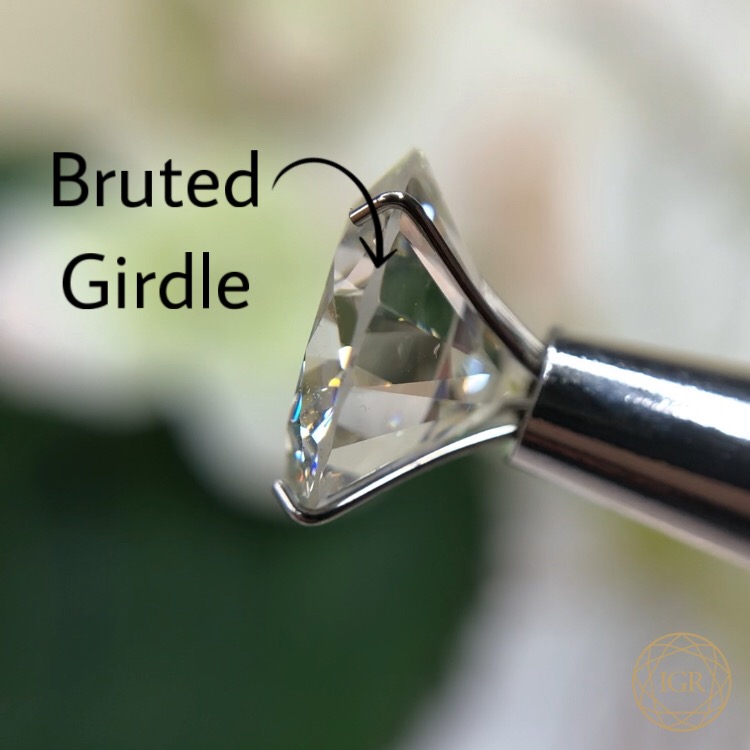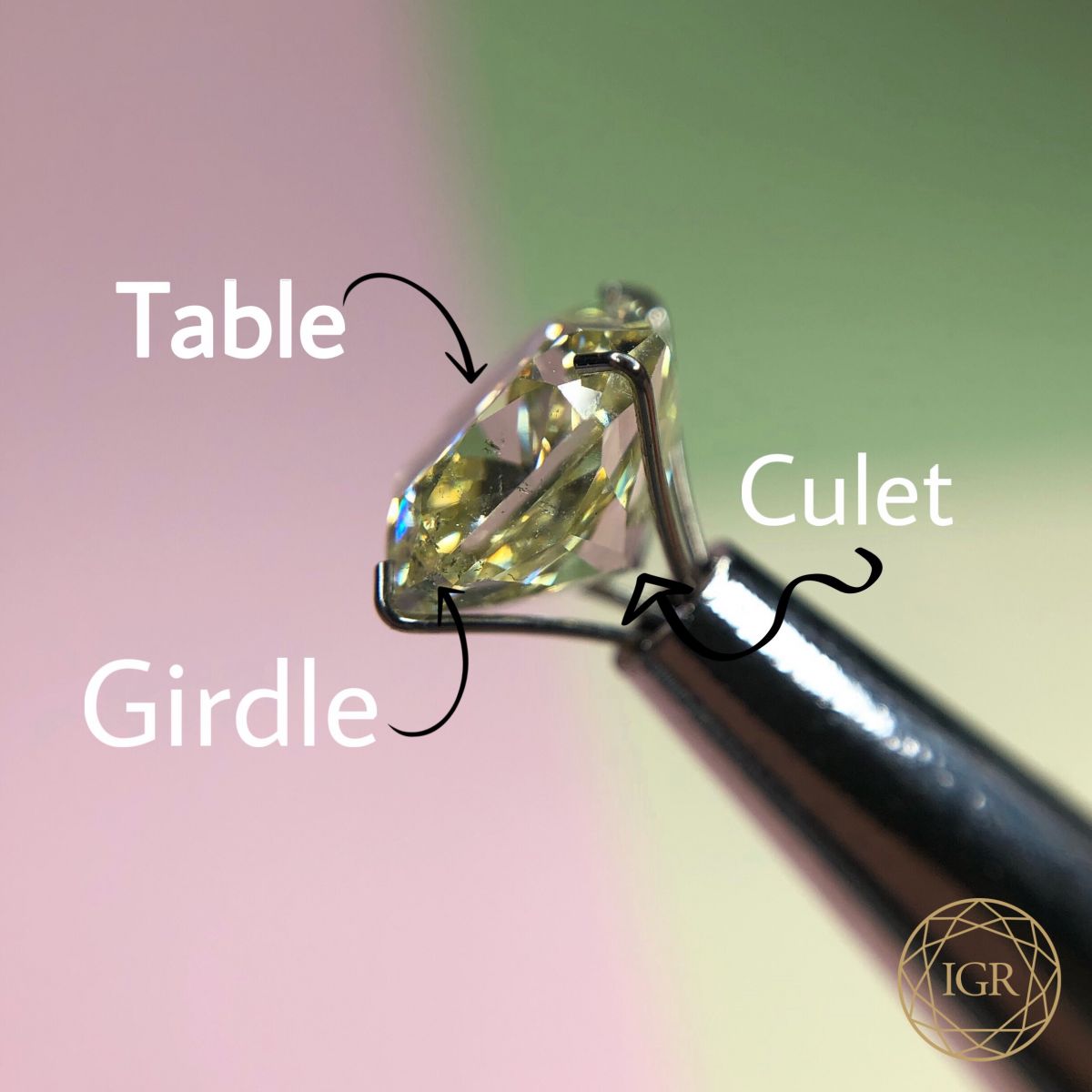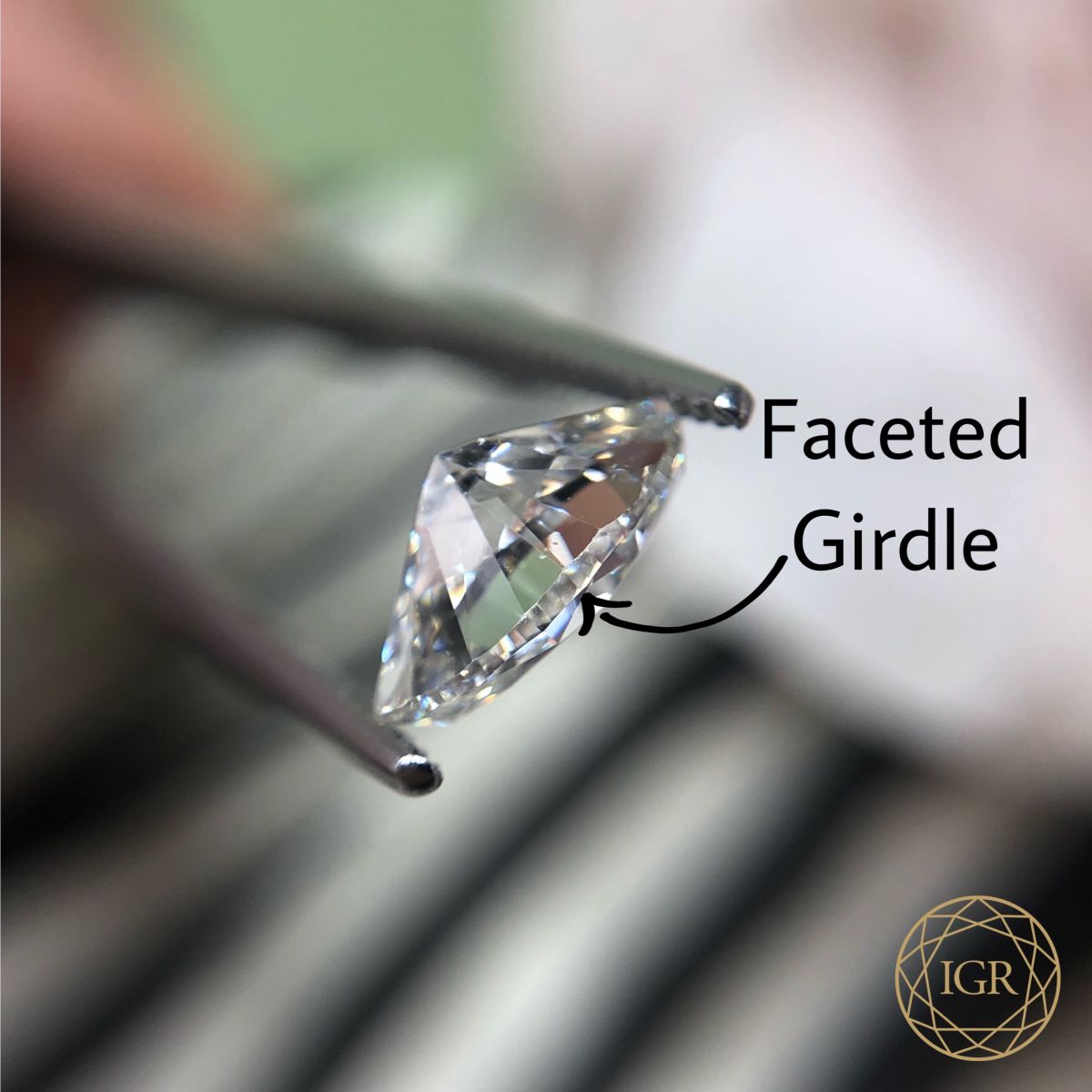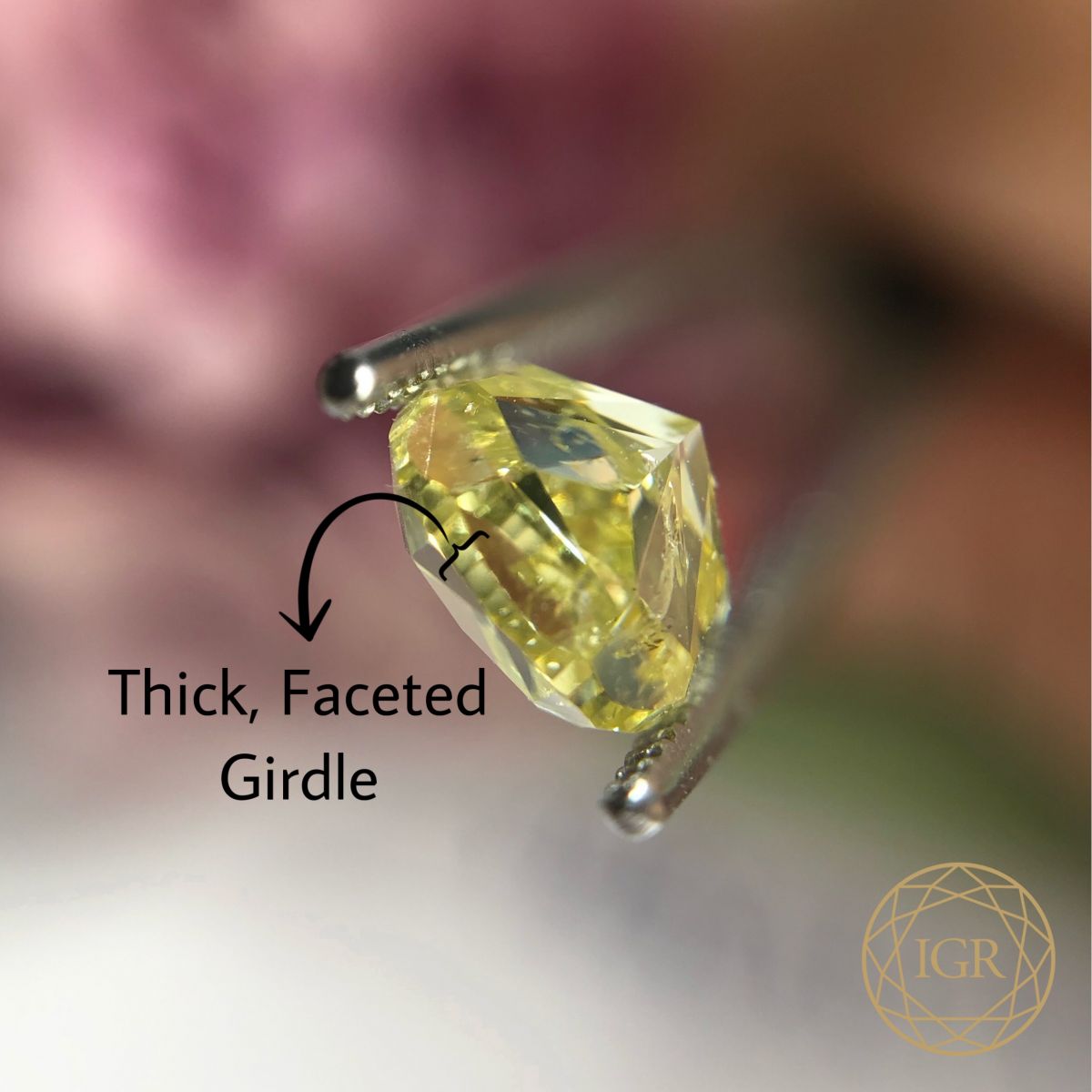G is for...Girdle
01.11.19
G is for… Girdle
No, not the type that gives you a helping hand when you’ve eaten too much, or the type that priests wear. This week we’re talking about diamond girdles.
What is a girdle? A diamond’s outermost edge is referred to as the girdle, where the crown (top) meets the pavilion (bottom).
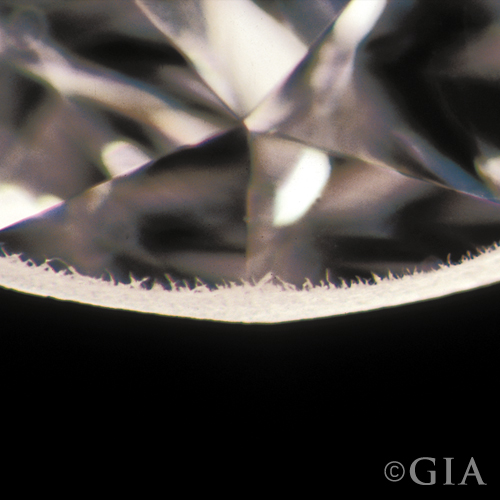
Bruted
A Girdle can be rough (bruted), polished or faceted. Early diamonds usually have unpolished girdles due to the bruting process used. In this, two diamonds are rotated against each other to create their rounded shape. If too much pressure is used during this bruting process, microscopic feathers appear, extending into the diamonds. This appearance is referred to as “bearding”, as the feathers look like tiny hairs.
Polished
A polished girdle is usually found in step cuts (such as emerald) and princess cuts, due to a more open faceting style. This type of girdle is smooth and flat, allowing light to enter easily.
Faceted
Today, most round brilliant cut diamonds have a faceted girdle, this helps maximise the diamond’s sparkle, as light Is allowed to reflect and refract in the best way, allowing it to bend in with the rest of the diamond.
Thickness
When purchasing a diamond, the girdle finish isn’t very significant in the value of the stone, the thickness of the girdle, however, is. The thickness of a girdle can vary from Extremely Thin – Extremely Thick. The variation in thickness of the girdle can affect the carat weight and symmetry/proportions of a diamond. A thick girdle means a lot of the diamond’s carat weight is held there, so the appearance of the diamond may seem smaller than one with a thin or medium girdle of the same carat weight. Extremely thin girdles have a greater risk of chipping when the stone is being set, so great care must be taken by the jeweller.
It is important to remember that a measured thickness is relative to a diamond’s carat weight. A girdle thickness of 0.30mm on a 0.50ct diamond will produce a “Very Thick” grading result, however the same thickness on a 5ct diamond will result in a “Thin-Medium” result.
Fancy colours
A number of fancy coloured diamonds will have thick girdles to help the diamond hold/enhance its colour, especially in cushion cut diamonds.
Inscription
Now-a-days, the girdle of a diamond is used as a place to put a laser inscription. Gem labs which provide diamond reports can inscribe the girdle with a number, which allows you to link the report with the diamond. These inscriptions usually will tell us information such as treatments and lab made.
Laura @IGR
